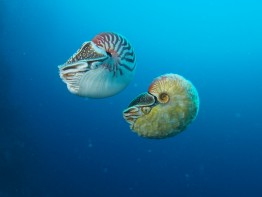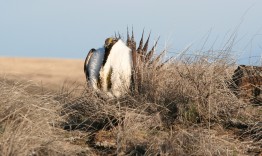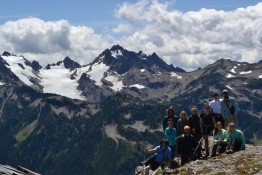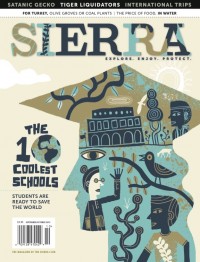In early August, biologist Peter Ward returned from the South Pacific with news that he had encountered an old friend, one he hadn’t seen in three decades. A professor with the College of the Environment’s Earth & Space Sciences and the College of Arts and Sciences‘ Department of Biology, Ward had seen what he considers one of the world’s rarest animals: Allonautilus scrobiculatus.
Read more at UW Today »Power lines jeopardize Washington's threatened sage grouse population
Transmission lines that funnel power from hydroelectric dams and wind turbines across Eastern Washington impact sage grouse habitat by isolating fragile populations and limiting movement, a new study by the College of the Environment’s Climate Impacts Group and others finds. The paper looks at how features in the landscape limit the species’ distribution and gene flow, and is the first to show that power-line corridors are an obstacle for sage grouse as they move across the landscape to feed and reproduce.
Read more at UW Today »Exploring wilderness in one of the lower forty-eight’s most untamed landscapes
What is wilderness? As we sit at our computers or scroll through on tablets or smart phones, perhaps we picture the opposite of our current locales—mountainous terrain, soaring evergreens, and a variety of critters that depend on each other to maintain balanced ecosystems. Maybe thoughts of flora and fauna, untamed and unexposed to an otherwise modern, industrialized, human-centric world swirl around.
Read more »UW researchers model tsunami hazards on the Northwest coast
Recent press coverage and conversations on social media have been a good reminder for Pacific Northwesterners that they live in a seismically active region. Stretching from northern California to British Columbia, the Cascadia subduction zone could slip at any time, causing a powerful earthquake and triggering a tsunami that would impact coastal communities. Scientists from multiple disciplines at the University of Washington and other institutions are working to learn more about this natural hazard.
See the full Q&A at UW Today »Sierra Club ranks UW one of the greenest universities in the U.S.
The University of Washington was recently named one of the country’s greenest universities by the Sierra Club. Sierra magazine, the group’s official publication, put UW at No. 8 in its 2015 “Cool Schools” rankings—marking the sixth time in nine years UW has been included in the top 10. The publication ranked more than 150 schools based on an extensive survey covering campus sustainability practices, including the availability of organic, local foods, waste systems that divert trash from landfills, transportation options that keep students and staff out of cars, and more.
Read more at UW Sustainability »





